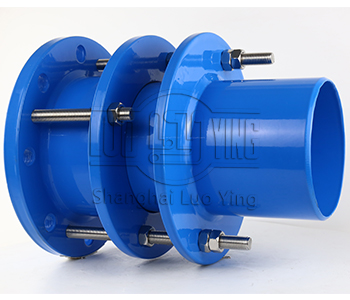Introduction to the expansion characteristics of monoflange pipe limit expansion joints.
Jul-23-18
Introduction to the expansion characteristics of monoflange pipe limit expansion joints. Monoflange pipe limit expansion joints, also known as single flange limit expansion joints, are devices used to absorb thermal expansion or contraction in piping systems. They are designed to restrict the movement of the pipe within certain limits while maintaining the integrity of the system.
The expansion characteristics of monoflange pipe limit expansion joints can be described in terms of their axial, lateral, and angular movements.
Axial Movement: Monoflange pipe limit expansion joints allow for axial movement of the pipe. This refers to the expansion or contraction of the pipe along its longitudinal axis. The expansion joint can extend or compress to accommodate the thermal changes in the pipe. By controlling the axial movement, the joint prevents excessive stress on the piping system and reduces the risk of pipe failure.

Angular Movement: Monoflange pipe limit expansion joints also allow for angular movement of the pipe. This refers to the rotation or twisting of the pipe around its longitudinal axis. When subjected to thermal expansion or contraction, the pipe may experience angular movement. The expansion joint flexes to accommodate this movement, preventing excessive stress on the pipe and maintaining the integrity of the system.
The expansion characteristics of monoflange pipe limit expansion joints are influenced by various factors, including the design of the joint, the materials used, and the operating conditions.
Design: The design of the expansion joint plays a crucial role in determining its expansion characteristics. Factors such as the number of convolutions, the thickness of the bellows, and the arrangement of the flanges can affect the joint's ability to accommodate axial, lateral, and angular movements.
Materials: The materials used in the construction of the expansion joint also impact its expansion characteristics. The choice of materials should consider factors such as temperature, pressure, corrosion resistance, and durability. Proper material selection ensures that the expansion joint can withstand the thermal stresses and movements imposed on the piping system.
Operating Conditions: The operating conditions, including temperature, pressure, and flow rate, directly affect the expansion characteristics of monoflange pipe limit expansion joints. Higher temperatures and pressures increase the thermal expansion and contraction of the pipe, requiring expansion joints that can accommodate larger movements.
In conclusion, monoflange pipe limit expansion joints provide a solution for managing thermal expansion and contraction in piping systems. Their expansion characteristics, including axial, lateral, and angular movements, allow for the safe and efficient operation of piping systems under varying conditions. Proper design, material selection, and consideration of operating conditions are essential for ensuring that the expansion joints effectively absorb the movements and maintain the integrity of the piping system.

